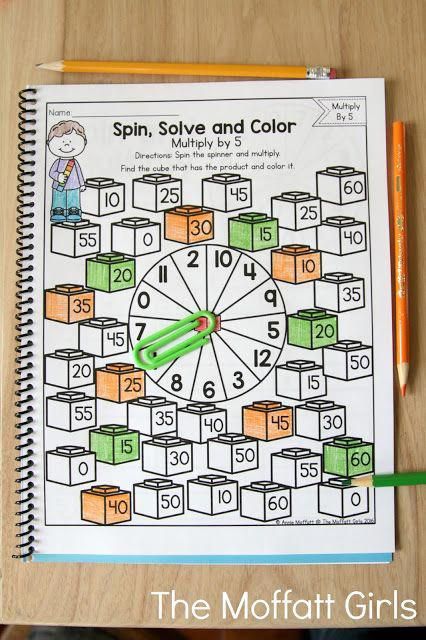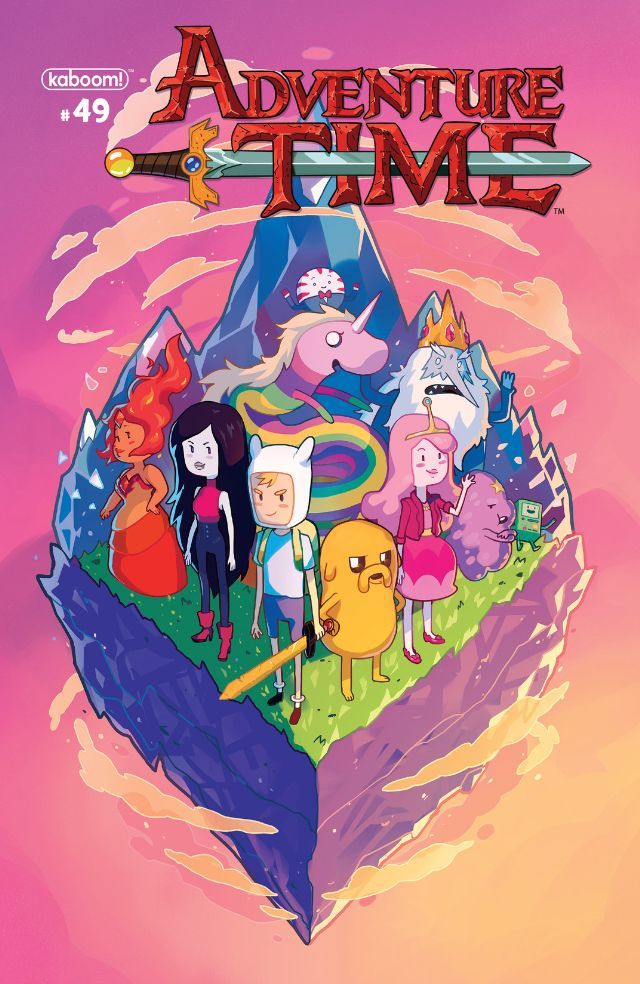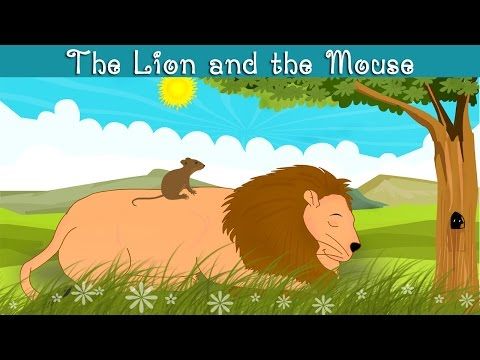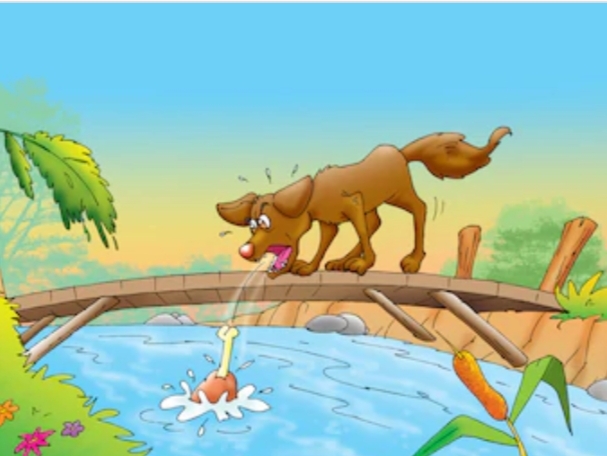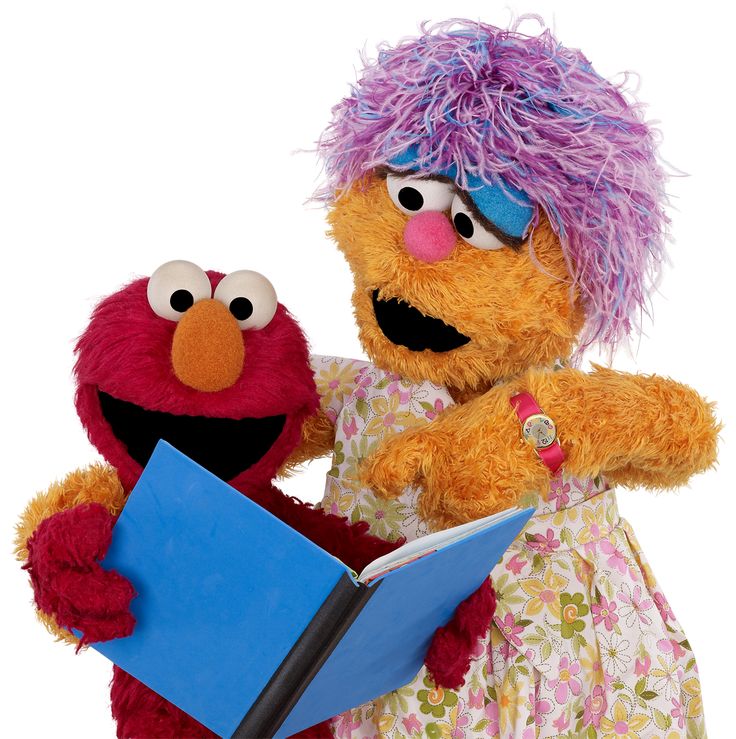Chicken little part 1
Chicken Little (Text, Audio + Video)
Let me tell you a story about a chicken. His name is Chicken Little. He lives in a normal little chicken house in a normal little town.
Chicken Little is neither tall nor short. He is neither fat nor thin. He is neither smart nor stupid. He is a completely normal chicken.
One completely normal morning, Chicken Little is eating his breakfast in the kitchen. (He likes toast with butter and coffee with cream.)
He is reading the internet. He sees a terrifying story with a terrifying headline. It says: THE SKY IS FALLING!
He is so scared that he drops his toast into his coffee. Plop!
“The sky is falling? THE SKY IS FALLING!” shouts Chicken Little. “I have to warn everyone!”
First, he emails the story to one-thousand of his closest friends. Then runs down the road to warn everyone else.
The first person he meets on the road is Gwen the Hen. She is coming from the supermarket.
“Good morning, Chicken Little!” says Gwen the Hen. “Where are you going? Why are you so scared?”
“The sky is falling! The sky is falling!” says Chicken Little.
“Really? How do you know?” asks Gwen.
“I saw it on the internet!” says Chicken Little.
“Holy moly! It must be true!” says Gwen. “Let's go!”
And so Chicken Little and Gwen the Hen run down the road towards the pond.
When they reach the pond, they meet Chuck the Duck. He is having a bath.
“Hello, you two!” says Chuck the Duck. “Where are you going? Why are you so scared?”
“The sky is falling! The sky is falling!” say Chicken Little and Gwen the Hen together.
“Really? How do you know?” asks Chuck.
“I saw it on the internet!” says Chicken Little.
“Oh no! It must be true!” says Chuck. “Let’s go!”
So Chicken Little, Gwen the Hen, and Chuck the Duck run down the road towards the farm.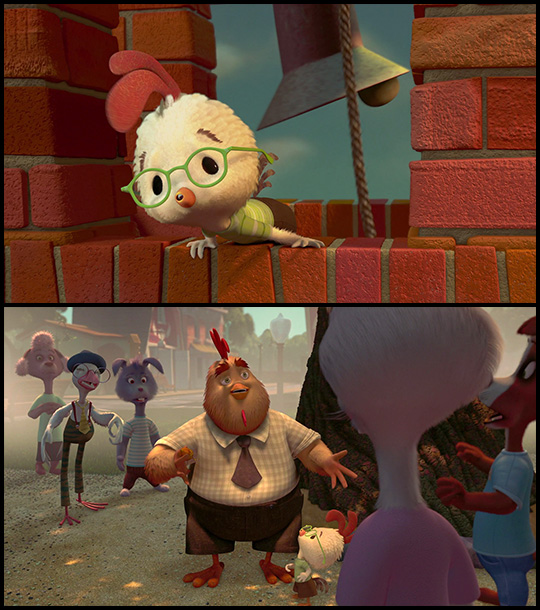
When they reach the farm they meet Bruce the Goose. He is reading poetry to Percy the pigeon.
“Hello everyone!” says Bruce the Goose. “Where are you going? Why are you so scared?”
“The sky is falling. THE SKY IS FALLING!” everyone yells.
“Really? How do you know?” asks Percy the pigeon.
“WE SAW IT ON THE INTERNET!!” they all say.
“Goodness gracious! It must be true!” says Bruce. “There is no time to read poetry now. Let's go!”
And Chicken Little, Gwen the Hen, Chuck the Duck, Bruce the Goose and Percy the Pigeon run down the road towards the town.
On the main street, they meet Fred the Fox. He is sitting at a cafe, writing on his laptop.
“Hello everyone!” says Fred the Fox. “Where are you going? Why are you so scared?”
“THE SKY IS FALLING! THE SKYYYY IS FAAALLLLING!” everyone yells.
“Really? How do you know?” asks Fred.
“WE SAW IT ON THE INTERNET!!!!” they all shout.
“Wow! Well then it must be true!” says the fox. “But don’t worry, friends, I know the perfect place to hide. Follow me!”
Fred the fox leads everyone through the village, down the road, across the field, and up a hill. At the top of the hill is a big, dark cave.
“Come in! Come in!” says Fred the fox. “There is enough room for everybody! The sky won't fall on us here. We are safe.”
And so, one by one, Chicken Little and all of his friends follow the fox into the cave.
The next morning, Chicken Little and his friends have disappeared. The cave is empty.
Where did they go? We don’t know for sure. But I will tell you one thing: Fred the Fox is very happy. He has a big, round belly.
“Idiots,” he says. And he sits under a tree, gets his laptop, and begins to write again.
Chicken Little (2005) - IMDb
- Cast & crew
- User reviews
- Trivia
IMDbPro
- 20052005
- GG
- 1h 21m
IMDb RATING
5.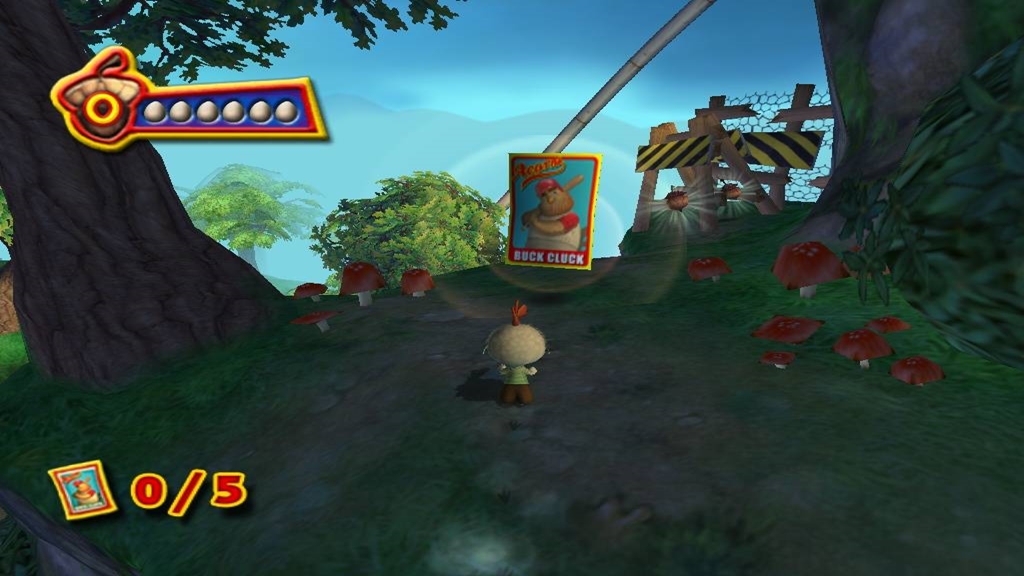 7/10
7/10
93K
YOUR RATING
POPULARITY
Play trailer2:17
5 Videos
99+ Photos
AnimationAdventureComedy
After ruining his reputation with the town, a courageous chicken must come to the rescue of his fellow citizens when aliens start an invasion.After ruining his reputation with the town, a courageous chicken must come to the rescue of his fellow citizens when aliens start an invasion.After ruining his reputation with the town, a courageous chicken must come to the rescue of his fellow citizens when aliens start an invasion.
IMDb RATING
5.7/10
93K
YOUR RATING
POPULARITY
- Director
- Mark Dindal
- Writers
- Mark Dindal(story by)
- Mark Kennedy(story by)
- Steve Bencich(screenplay by)
- Stars
- Zach Braff(voice)
- Joan Cusack(voice)
- Garry Marshall(voice)
- Director
- Mark Dindal
- Writers
- Mark Dindal(story by)
- Mark Kennedy(story by)
- Steve Bencich(screenplay by)
- Stars
- Zach Braff(voice)
- Joan Cusack(voice)
- Garry Marshall(voice)
- 312User reviews
- 146Critic reviews
- 48Metascore
- Awards
- 4 wins & 15 nominations
Videos5
Trailer 2:17
Watch Chicken Little
Trailer 1:07
Watch Chicken Little
Clip 2:00
Watch Chicken Little 3D
Clip 0:45
Watch Chicken Little 3D
Clip 1:27
Watch Chicken Little 3D
Photos308
Top cast
Zach Braff
- Chicken Little
- (voice)
Joan Cusack
- Abby Mallard
- (voice)
Garry Marshall
- Buck Cluck
- (voice)
Don Knotts
- Mayor Turkey Lurkey
- (voice)
Patrick Stewart
- Mr.
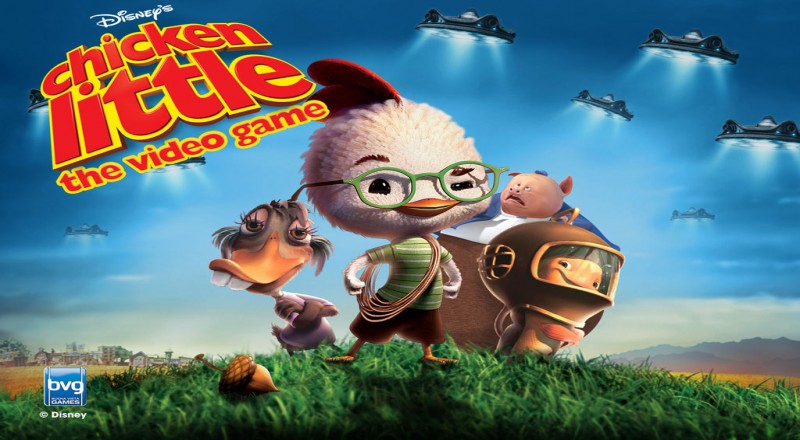 Woolensworth
Woolensworth - (voice)
Amy Sedaris
- Foxy Loxy
- (voice)
Steve Zahn
- Runt of the Litter
- (voice)
Wallace Shawn
- Principal Fetchit
- (voice)
Harry Shearer
- Dog Announcer
- (voice)
Fred Willard
- Melvin - Alien Dad
- (voice)
Catherine O'Hara
- Tina - Alien Mom
- (voice)
Patrick Warburton
- Alien Cop
- (voice)
Adam West
- Ace - Hollywood Chicken Little
- (voice)
Mark Walton
- Goosey Loosey
- (voice)
Mark Dindal
- Morkubine Porcupine
- (voice)
- …
Dan Molina
- Fish Out of Water
- (voice)
Joe Whyte
- Rodriguez
- (voice)
- …
Sean Elmore
- Kirby - Alien Kid
- (voice)
- Director
- Mark Dindal
- Writers
- Mark Dindal(story by)
- Mark Kennedy(story by)
- Steve Bencich(screenplay by)
- All cast & crew
- Production, box office & more at IMDbPro
More like this
Meet the Robinsons
Home on the Range
Brother Bear
Over the Hedge
Open Season
Bolt
Chicken Run
Shark Tale
Flushed Away
Alvin and the Chipmunks
Robots
Hoodwinked
Storyline
Did you know
- Quotes
Mayor Turkey Lurkey: [to an alien] Oh, we surrender! Here, take the key to the city!
[alien zaps the key]
Mayor Turkey Lurkey: [holds up another key] Key to my car?
[alien zaps key and car at the same time]
Mayor Turkey Lurkey: [holds a box of Tic Tacs] Tic Tac?
[alien zaps Lurkey]
- Connections
Edited into On the Set: Chicken Little (2005)
User reviews312
Review
Featured review
7/
10
Laughter ensues in this film
Chicken Little
Chicken Little puts you right with the characters and is funny for all.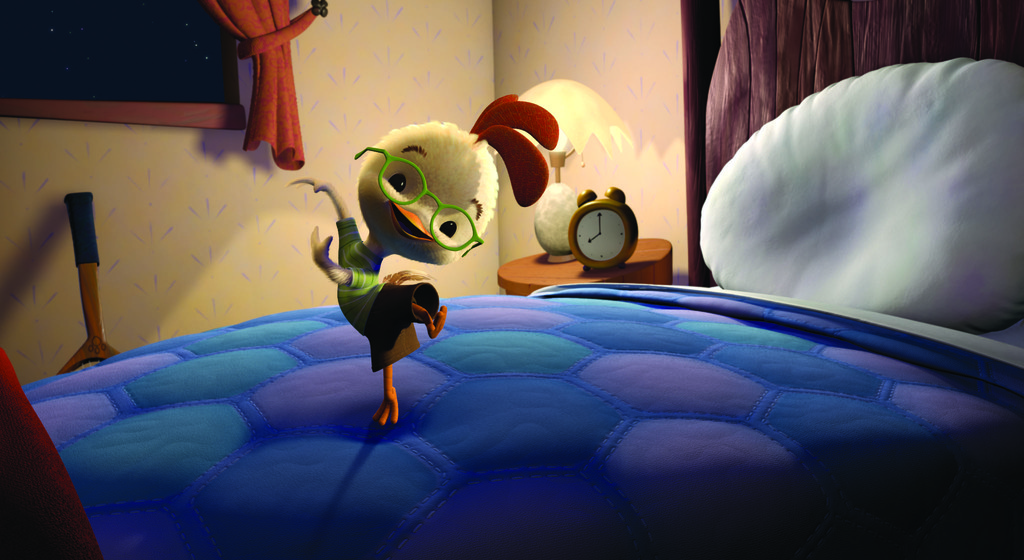 The jokes are great because children will still get them, while the adults won't groan aloud. The movie is based on the original tale of Chicken Little, but adds so much more to the story.
The jokes are great because children will still get them, while the adults won't groan aloud. The movie is based on the original tale of Chicken Little, but adds so much more to the story.
The story starts off with Chicken Little proclaiming that "the sky is falling". Sadly, not even his father believes him. Chicken Little feels bad about this, but manages to keep high spirits with the help of three good friends: Runt (a nervous pig), Fish (a mute fish, who goes around with a water filled helmet), and Abby (an "ugly duckling", but it is the nicest girl on the block, and has a crush on Chicken Little).
One year after the "sky is falling" incident, it happens again. A piece of the sky falls right on his head! This time, Chicken Little gets his friends' help. They soon discover that the "sky piece" is really part of and alien space ship. Jokes galore when they find themselves on the ship. You'll laugh until you cry.
Chicken Little is played Scrubs' Zach Braff. He brings a childish innocence to the character, while completely relating to thousands.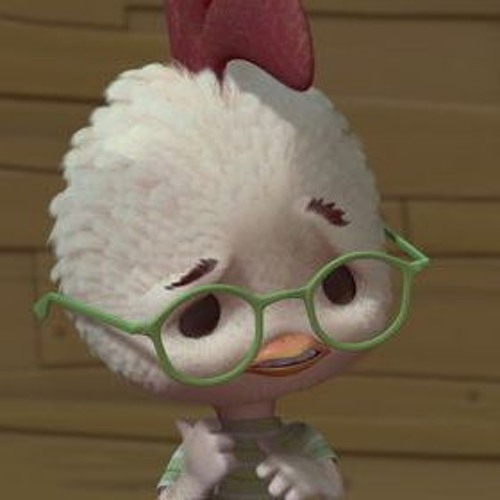 Steve Zahn lends his voice to Runt, who has a superiority complex, but is a true friend and a karaoke fan. Fish Dan Molina creates Fish's voice. This is a cute role, who is a classic character, such as Scrat in Ice Age. He'll make any situation funny.
Steve Zahn lends his voice to Runt, who has a superiority complex, but is a true friend and a karaoke fan. Fish Dan Molina creates Fish's voice. This is a cute role, who is a classic character, such as Scrat in Ice Age. He'll make any situation funny.
Don't miss this!
helpful•17
12
- zebraspots
- Mar 26, 2006
Details
- Release date
- November 4, 2005 (United States)
- Country of origin
- United States
- Official sites
- Official site
- Stream Chicken Little officially on Disney+ Hotstar Indonesia
- Language
- English
- Also known as
- Chú Gà Siêu Quậy
- Filming locations
- Walt Disney Feature Animation - 500 S.
 Buena Vista Street, Burbank, California, USA
Buena Vista Street, Burbank, California, USA
- Walt Disney Feature Animation - 500 S.
- Production companies
- Walt Disney Pictures
- Walt Disney Animation Studios
- See more company credits at IMDbPro
Box office
- Budget
- $150,000,000 (estimated)
- Gross US & Canada
- $135,386,665
- Opening weekend US & Canada
- $40,049,778
- Nov 6, 2005
- Gross worldwide
- $314,432,837
Technical specs
- Runtime
1 hour 21 minutes
- Color
- Sound mix
- DTS
- Dolby Digital
- SDDS
Related news
Contribute to this page
Suggest an edit or add missing content
Top Gap
What is the Japanese language plot outline for Chicken Little (2005)?
Answer
More to explore
Recently viewed
You have no recently viewed pages
Chicken
Chickens were domesticated about 5 thousand years ago in South Asia.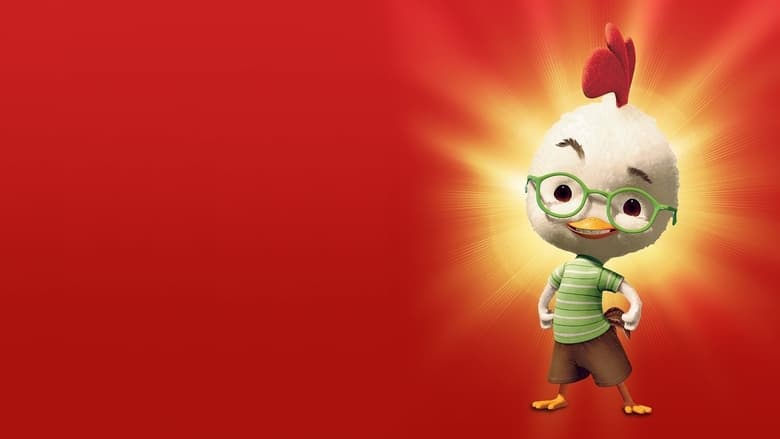 The wild ancestor of the modern chicken was the banker's rooster. Wild
The wild ancestor of the modern chicken was the banker's rooster. Wild
individuals of this species can still be found today in the jungles of Indonesia, India and Burma. Chickens and roosters were bred not only for meat and eggs, but also for cockfights. The Athenian commander Themistocles, before the war with the Persians, even forced his soldiers to watch these battles so that the soldiers would adopt courage and stamina from birds. Over time, the chicken has become the most popular poultry in the Old and New Worlds. However, it became truly affordable only after the Second World War, when mass production of broilers was established. In the Old Russian language, compared to modern Russian with “near-chicken” terms, everything was rather confusing: the word “chicken” was called a rooster, and the word “chicken” was an adult chicken.
Chicken meat is rich in phosphorus, sulfur and iron.
Types and varieties
The smallest representatives of the chicken breed on our shelves are gherkins . They are no more than 24 days old, weigh 200-300 g and cook very quickly. Actually chickens are called young chickens slaughtered up to six months of age, weighing no more than 700 g.0003 broilers , from the English verb to broil , which means " to roast on fire ". Today, broilers account for more than 62% of the world's poultry meat production.
They are no more than 24 days old, weigh 200-300 g and cook very quickly. Actually chickens are called young chickens slaughtered up to six months of age, weighing no more than 700 g.0003 broilers , from the English verb to broil , which means " to roast on fire ". Today, broilers account for more than 62% of the world's poultry meat production.
Castrated males at 4 months of age are called capons . These birds are quite large, weighing 3–4 kg, and they have more light-colored meat.
Braised (sterilized) chickens in Russia before the revolution were called poulards in the French manner (from the word poularde). They are very tender, even more tender than capons, and cook quickly.
The largest chickens - for stewing, at the age of 14-15 months, weighing up to 5 kg. Chickens older than 15 months become quite tough and are called soup chickens in the trade. A small, yellowish-skinned chicken fed on a corn-based diet is called Cornish . Its tender and tasty meat has a slight nutty flavor. The tastiest chicken is free-range, not cage-raised. Its meat is tough, but its taste is amazing.
Its tender and tasty meat has a slight nutty flavor. The tastiest chicken is free-range, not cage-raised. Its meat is tough, but its taste is amazing.
How to cook
chickens have tender meat, but very little fat, they need to be often poured with oil or juice during baking so that they do not dry out. Chickens are fried in a pan (tobacco chickens) or baked - very quickly so as not to overdry. You can bake a chicken by gently stuffing chopped herbs and garlic between the skin and meat, and covering the breast with strips of bacon.
Broilers are universal, but it is not recommended to cook broth from them: it will not be very tasty and very fatty. Broilers are best baked or grilled with lots of spices. Fatty chickens are very good to fry whole on a spit or cut into quarters and bake on the grill.
Classic French Rooster in Wine ( coq au vin ) is made from Capon ; in addition, in France they are stuffed (for example, with rice and nuts or scrambled eggs with paprika and garlic) and baked.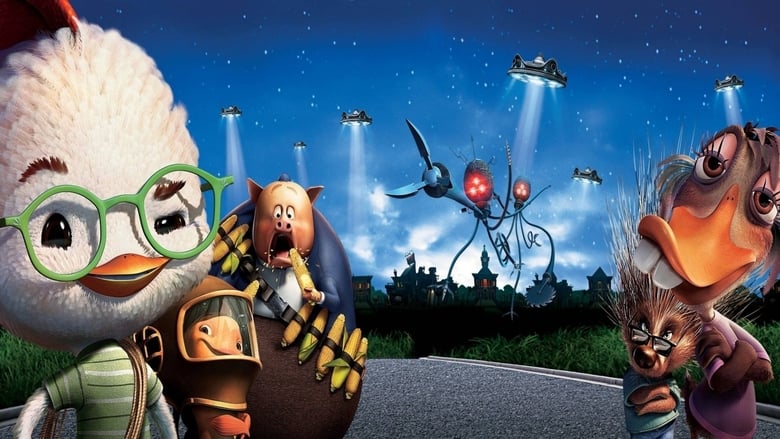 Cooking only spoils capons and poulards . If you don't have a skewer in your oven, skewer the chicken on an empty bottle set in a pan with a little wine or water to drip off the fat, and bake at 180°C.
Cooking only spoils capons and poulards . If you don't have a skewer in your oven, skewer the chicken on an empty bottle set in a pan with a little wine or water to drip off the fat, and bake at 180°C.
If you want to keep the white color of the meat, brush the chicken generously with a mixture of honey and lemon juice.
Chicken meat is usually divided into white (breast and wings) and dark (legs, thighs and back). Fans of dietary meat are advised to remove the skin from the chicken, which contains the most fat. The chicken meat itself is quite lean, especially the breast.
Any breed of chicken can be marinated the way it is done in India: in yogurt (or kefir, or curdled milk), mixed with spices, from 2 to 12 hours. The meat of even an old and tough chicken will simply melt in your mouth after that.
Chicken is not the kind of product that can be experimented with in the style of " al dente ". Tricks - with or without "blood", they do not work with it. The chicken is either done or it's not. You can check this with a special thermo-probe. White meat (breast) is ready at a temperature of 71 ° C, for dark (legs and legs) time it takes more and the optimum temperature is 77 ° C. It is clear that because of such differences, it is better to cook these parts separately or first put dark meat, and only then tender, white, which must not be overheated so that it does not become dry. If you are grilling chicken, the flattened carcass should be placed at a distance of 18-23 cm from the heating element and grilled on the inside for 15 minutes, and then on the outside for 10-15. To make chicken meat juicier, pieces of softened butter are placed under the skin. Before cutting, the finished chicken can be covered with foil and left for 15-20 minutes - the juice is evenly distributed over the carcass.
The chicken is either done or it's not. You can check this with a special thermo-probe. White meat (breast) is ready at a temperature of 71 ° C, for dark (legs and legs) time it takes more and the optimum temperature is 77 ° C. It is clear that because of such differences, it is better to cook these parts separately or first put dark meat, and only then tender, white, which must not be overheated so that it does not become dry. If you are grilling chicken, the flattened carcass should be placed at a distance of 18-23 cm from the heating element and grilled on the inside for 15 minutes, and then on the outside for 10-15. To make chicken meat juicier, pieces of softened butter are placed under the skin. Before cutting, the finished chicken can be covered with foil and left for 15-20 minutes - the juice is evenly distributed over the carcass.
How to choose and store
Bresse Poulard is probably one of the most famous chickens in the world. This unique breed was bred many centuries ago in the French city of Bresse.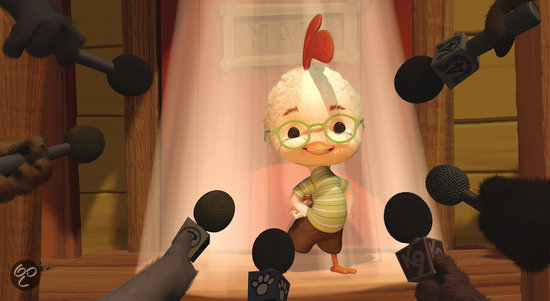 It can be distinguished by its snow-white plumage, red crest and blue legs.
It can be distinguished by its snow-white plumage, red crest and blue legs.
Bresse chickens grow up in freedom, feed on selected grains and special herbs. Each Bresse poulard has a ring with a personal number on its leg. It goes on sale in a canvas bag with a print.
When buying a chicken in the market, choose the one with a bright red scallop, the breast bone is elastic, but easily bends when pressed, the carcass is dense. In older chickens, the skin on the paws is rough, yellowish in color. Frozen poultry must have a pale pink hue, ice or liquid are not allowed in the package. The quality of meat does not always depend on the size of the carcass. Large broilers are even tastier than young chickens. Chopped and packaged chicken is a great option for a hassle-free dinner, but you need to choose exactly the parts that are suitable for the intended menu. Frozen poultry is stored for a long time and does not lose its nutritional properties.
Chickens and their relatives | Centralized system of children's libraries in the city of Ryazan
The order Galliformes is a widespread and well-isolated ancient group of birds. Chicken are extremely widespread, almost all over the globe, with the exception of Antarctica, the extreme northern islands of Eurasia and America, the southern part of South America and Arabia. Currently, 250 species of birds belong to the order Galliformes, in addition, 108 fossil species are known.
Chicken are extremely widespread, almost all over the globe, with the exception of Antarctica, the extreme northern islands of Eurasia and America, the southern part of South America and Arabia. Currently, 250 species of birds belong to the order Galliformes, in addition, 108 fossil species are known.
Chickens…
What are the most popular poultry today? We can definitely say that these are domestic chickens. Chickens were the first of all birds to be domesticated. They came from wild bush chickens that lived in southeast Asia. Breeds of chickens, which today there are more than 100, were created for different purposes in the process of many years of painstaking selection work. More than eight thousand years ago, chickens were tamed by people, since then the breeds have evolved independently, and were selected by man for their best qualities. All chickens are usually divided into 5 types: meat, fighting, meat and egg, egg and decorative.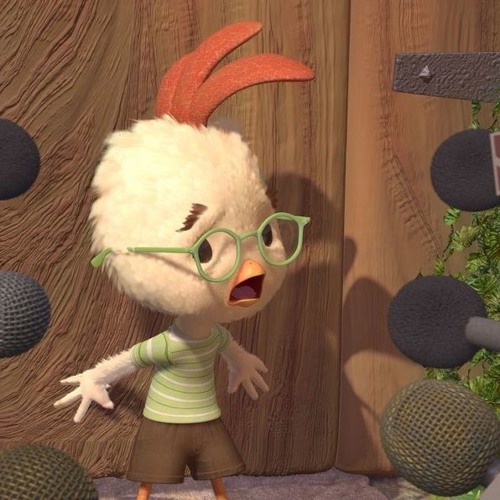 Meat - egg chickens have high meat and egg productivity. Meat poultry farming has been developed simultaneously with the growth of cities. Fighting breeds of chickens are the oldest breeds. The homeland of most fighting chickens is Central Asia, but after they were brought to Europe, they became very widespread throughout the world. Decorative breeds of chickens are distinguished by their unusual external characteristics. Not having great productivity, they win the hearts of poultry farmers with their wonderful appearance. Some breeds are not specially bred, many are a domesticated form of wild chickens.
Meat - egg chickens have high meat and egg productivity. Meat poultry farming has been developed simultaneously with the growth of cities. Fighting breeds of chickens are the oldest breeds. The homeland of most fighting chickens is Central Asia, but after they were brought to Europe, they became very widespread throughout the world. Decorative breeds of chickens are distinguished by their unusual external characteristics. Not having great productivity, they win the hearts of poultry farmers with their wonderful appearance. Some breeds are not specially bred, many are a domesticated form of wild chickens.
Modern English dwarf fighting chickens were bred in England. They differ from other fighting chickens in that they have a fairly good temperament. This breed is very small in size - the average weight of roosters is only 0.6 kilograms, and that of hens is 0.5 kilograms. Nevertheless, these chickens show very good performance in battles.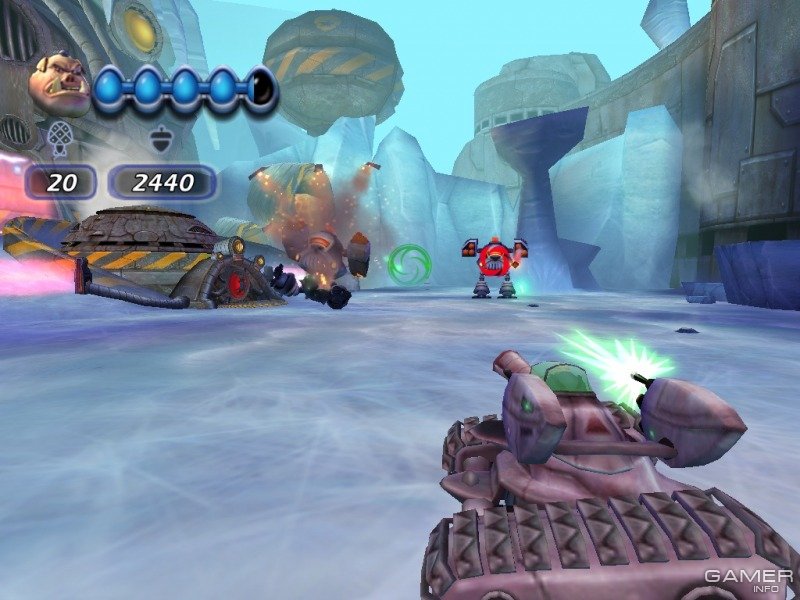 | |
| The curly chicken is an ornamental breed that originated in Southeast Asia. The exact age of this breed is unknown, but their existence was recorded in manuscripts many centuries ago. This is probably the most exotic and beautiful breed from Asia. The appearance of curly chickens is very unusual: the feathers are very beautifully twisted into amazing curls. And little chickens, in general, are real charmers: very funny and funny. By the way, due to its curly hair, this breed does not know how to fly at all. | |
Araucan chicken is a very ancient breed of chicken. These chickens belong to the breeds of a decorative orientation, however, they show very good egg production, so they can also be attributed to egg breeds. Araucan chickens were bred on the continent of South America, in the country of Chile. This breed got its name in honor of the Indian tribe that lives in Chile. There are a lot of different mysterious legends around this breed. The peculiarity of the breed lies in the fact that Aracuana chickens lay eggs with a bluish tint. Oddly enough, this breed does not have the instinct of incubation at all. The breed is very rare and practically does not occur on the territory of Russia. The peculiarity of the breed lies in the fact that Aracuana chickens lay eggs with a bluish tint. Oddly enough, this breed does not have the instinct of incubation at all. The breed is very rare and practically does not occur on the territory of Russia. |
Chinese silk hen - the plumage of these birds is soft and silky, more reminiscent of the wool or hair of fur-bearing animals. This feature is due to the fact that the pen rod is very fragile. In China, these birds are called "crow-bone chickens". They have black bones, brownish-black skin, greyish-black muscle mass. This is due to the penetration of the natural pigment eumelanin into the musculoskeletal tissues. Representatives of silk chickens are quite small. Males reach 1.5 kg of live weight, and hens - 0.8-1.1 kg. The Chinese silk hen is capable of laying approximately 100 eggs per year. The hens of this breed have a very strongly developed incubation instinct. They are very attentive mothers, and do an excellent job with this role not only in relation to their native chicks, but also to foundlings. Since ancient times, these hens have been used to nurse quail and pheasant chicks. Representatives of this breed are very affectionate and friendly. Perhaps it is difficult to find another bird that you would like to cuddle and stroke as well as a silk hen. But the most surprising thing is that these birds like such treatment, and they willingly go into the hands of the owner.
They are very attentive mothers, and do an excellent job with this role not only in relation to their native chicks, but also to foundlings. Since ancient times, these hens have been used to nurse quail and pheasant chicks. Representatives of this breed are very affectionate and friendly. Perhaps it is difficult to find another bird that you would like to cuddle and stroke as well as a silk hen. But the most surprising thing is that these birds like such treatment, and they willingly go into the hands of the owner.
Onagadori
These are small birds, the weight of roosters is 800 g, of hens 700 g. Outwardly, onagadori look like ordinary village chickens, but they have a unique anomaly - the tail feathers of roosters do not shed with good care, but grow continuously for many years. During the year, the tail grows by about 90-100 cm. In medieval Japan, such roosters were grown under special conditions. So that the birds would not damage the feathers, they were put in cramped cages suspended from the ceiling, in the cage the rooster could not move, and its tail hung down through the bars.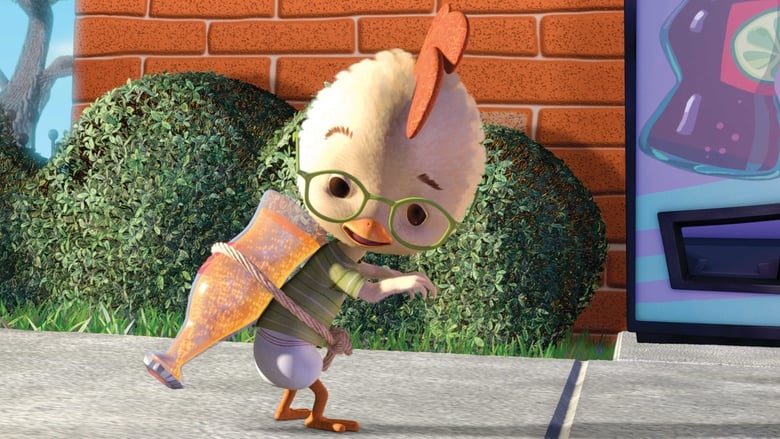 Particularly wealthy owners released the birds into the pen, but a servant was assigned to each rooster, who wore his tail wound on a stick. If in ordinary onagadori the tail grows up to 1-1.5 m (which is a lot for such a small breed), then in the best birds the tail length reached 8-10 m. The absolute champions, whose tail grew up to 10 years, had a feather length of 11 and 13 m! This is an absolute record not only for domestic chickens, but also in the world of birds in general.
Particularly wealthy owners released the birds into the pen, but a servant was assigned to each rooster, who wore his tail wound on a stick. If in ordinary onagadori the tail grows up to 1-1.5 m (which is a lot for such a small breed), then in the best birds the tail length reached 8-10 m. The absolute champions, whose tail grew up to 10 years, had a feather length of 11 and 13 m! This is an absolute record not only for domestic chickens, but also in the world of birds in general.
... And their relatives
Hoatzin
Along the wooded banks of the Amazon, where trees hang over the muddy waters of the river, you can meet a wonderful bird called the hoatzin (Opisthocomus hoazin). This peculiar bird in zoological systematics stands somewhat apart. Some scientists even tend to single out the hoatzin as a separate order with a single species of a single family. More often, however, the hoatzin is attached to chicken birds, separating it into a special suborder. It is noteworthy that, being really close to chickens, the hoatzin simultaneously has a number of similarities with some representatives of the cuckoo order. Hoatzins are fairly slender birds, about the size of a crow. Brownish plumage. Chest, underside of neck, throat and chin are yellowish. The sides of the head are devoid of plumage and in mating males are blue in color. On the head is a crest of a large number of narrow brownish-yellowish feathers. The wings are large, but weak, the tail is long. The ends of the tail feathers (there are 10 of them) are yellowish-ocher in color. Hoatzin's paws are strong, the beak is short, but powerful. Hoatzin flies badly. Most often, he simply glides on outstretched wings from the top of one tree to the underside of the crown of another tree on the opposite side of the channel. Hoatzins inhabit the wooded part of the northeast of South America: the Amazon basin, Venezuela, the eastern part of Colombia.
More often, however, the hoatzin is attached to chicken birds, separating it into a special suborder. It is noteworthy that, being really close to chickens, the hoatzin simultaneously has a number of similarities with some representatives of the cuckoo order. Hoatzins are fairly slender birds, about the size of a crow. Brownish plumage. Chest, underside of neck, throat and chin are yellowish. The sides of the head are devoid of plumage and in mating males are blue in color. On the head is a crest of a large number of narrow brownish-yellowish feathers. The wings are large, but weak, the tail is long. The ends of the tail feathers (there are 10 of them) are yellowish-ocher in color. Hoatzin's paws are strong, the beak is short, but powerful. Hoatzin flies badly. Most often, he simply glides on outstretched wings from the top of one tree to the underside of the crown of another tree on the opposite side of the channel. Hoatzins inhabit the wooded part of the northeast of South America: the Amazon basin, Venezuela, the eastern part of Colombia. They settle in small colonies of 10-15 pairs on the banks of channels. In nests, which are usually arranged on large shrubs, there are 2-3 white eggs with brown spots, very similar to the eggs of our marsh hens. Hoatzin chicks are extremely interesting. They have two well-developed claws on each wing (adult birds do not have claws). Shortly after hatching from the eggs, the chicks begin to crawl, using all four limbs for this, crawl out of the nest, clinging to thin branches with their claws. Sometimes the chicks fall into the water. Then they clumsily swim to the shore, on occasion they can even dive, and then climb onto their native tree, using their paws, wings and even their beak. The voice of the hoatzin is a sharp peculiar croak and a monotonous throaty muttering. The meat has a sharp, musty smell, for which the European settlers called the hoatzin a smelly bird. The name "hoatzin" is taken by us from the language of the Aztecs.
They settle in small colonies of 10-15 pairs on the banks of channels. In nests, which are usually arranged on large shrubs, there are 2-3 white eggs with brown spots, very similar to the eggs of our marsh hens. Hoatzin chicks are extremely interesting. They have two well-developed claws on each wing (adult birds do not have claws). Shortly after hatching from the eggs, the chicks begin to crawl, using all four limbs for this, crawl out of the nest, clinging to thin branches with their claws. Sometimes the chicks fall into the water. Then they clumsily swim to the shore, on occasion they can even dive, and then climb onto their native tree, using their paws, wings and even their beak. The voice of the hoatzin is a sharp peculiar croak and a monotonous throaty muttering. The meat has a sharp, musty smell, for which the European settlers called the hoatzin a smelly bird. The name "hoatzin" is taken by us from the language of the Aztecs.
Peacock
The common peacock (Pavo cristatus), or Indian peacock, is the most numerous species of peacocks, belongs to the order Galliformes, the pheasant family, the genus Peacocks.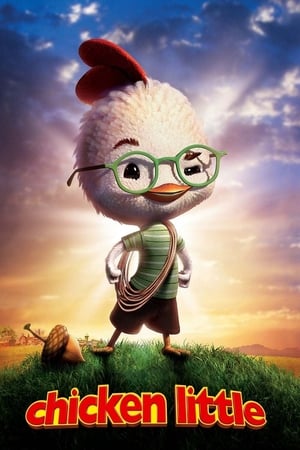 Ordinary peacocks have a long graceful neck and a small head with a small tuft: the males have a blue tuft, and the females have a brown one, the color of plumage. The voice of the peacock is sharp and not very pleasant. The body length of a male peacock reaches 100-125 cm, the length of the tail is 40-50 cm, while the length of the covering feathers of the uppertail is 120-160 cm. The weight of the male peacock is 4 - 4.25 kg. The plumage of this beautiful bird contains a wide variety of colors: the back is green, the head, part of the chest and neck are blue, the bottom of the body is black. The female Indian peacock is smaller and has a more modest, brown color. A riot of plumage colors and a luxurious fan-shaped eyed tail created the image of the peacock as the most beautiful bird in the world. Interestingly, only males can boast such beautiful tails. Ornithologists call this sexual dimorphism. It turns out that what we call a peacock's tail is actually nothing more than the feathers of the rump.
Ordinary peacocks have a long graceful neck and a small head with a small tuft: the males have a blue tuft, and the females have a brown one, the color of plumage. The voice of the peacock is sharp and not very pleasant. The body length of a male peacock reaches 100-125 cm, the length of the tail is 40-50 cm, while the length of the covering feathers of the uppertail is 120-160 cm. The weight of the male peacock is 4 - 4.25 kg. The plumage of this beautiful bird contains a wide variety of colors: the back is green, the head, part of the chest and neck are blue, the bottom of the body is black. The female Indian peacock is smaller and has a more modest, brown color. A riot of plumage colors and a luxurious fan-shaped eyed tail created the image of the peacock as the most beautiful bird in the world. Interestingly, only males can boast such beautiful tails. Ornithologists call this sexual dimorphism. It turns out that what we call a peacock's tail is actually nothing more than the feathers of the rump. It's all about the height and location of the pen.
It's all about the height and location of the pen.
Shorter feathers cover longer ones, reaching one and a half meters in length. The feather consists of rare thread-like fibers with a bright "eye" at the end. With impending danger, an ordinary peacock can take off, but the flight will not be long and high: only a few meters ahead. The common (Indian) peacock lives in Sri Lanka, India, Pakistan, Bangladesh and Nepal. In the wild, peacocks try to avoid open areas, they settle in the jungle or forests, near villages and cultivated lands, live in dense bush and on the banks of rivers. Having a long tail, the bird can move quickly enough even in thickets. In food, these birds are picky. The peacock feeds mainly on grains, plant shoots, fruits, berries, insects, often earning its livelihood in the fields of farmers. Sometimes they even prey on small snakes and rodents. Being polygamous birds, peacocks live in groups of 3-5 birds, including all females and only one male. The clutch contains 4-7 eggs, which the females lay in nests located on the ground.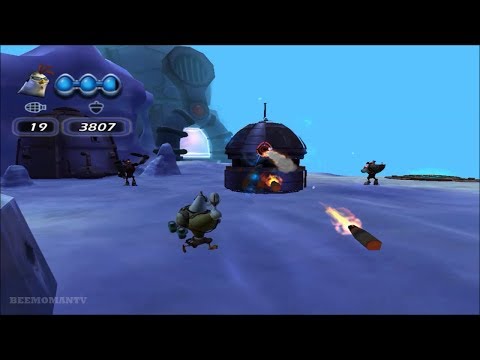 The eggs hatch for an average of 28 days, after which the chicks are born, covered with a gray fluff. By the way, Indian peacock males have the same brown color as the female, up to 1.5 years. And only after this time their plumage changes color. In total, peacocks live for about 20 years.
The eggs hatch for an average of 28 days, after which the chicks are born, covered with a gray fluff. By the way, Indian peacock males have the same brown color as the female, up to 1.5 years. And only after this time their plumage changes color. In total, peacocks live for about 20 years.
Weed chickens
A weedy chicken is called biglegged. Scientists have identified 10 species of weed chickens. This bird lives in Australia, where you can find mysterious heaps up to 15 meters in diameter and up to 6 meters high. These are incubators inside which weed chicken eggs are stored. It is this bird that builds such giant "nests". Weed chicken has a relatively small size - it is about the size of a goose. The bird has powerful and strong legs with which it digs the ground. The bird almost never flies, although in case of danger it is able to fly up a tree. The weed hen is unique in that it is the only bird that does not build nests or incubate eggs.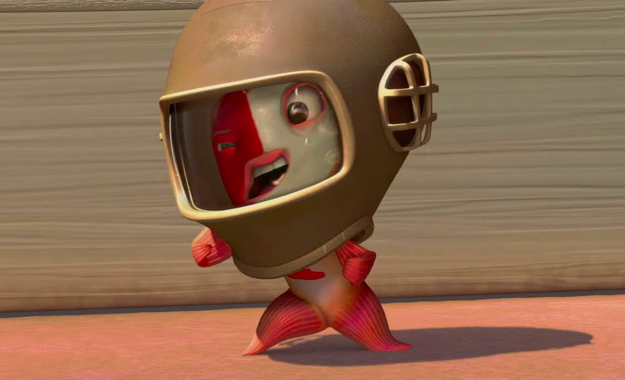 Male weed chickens dig holes up to one meter deep and up to 2.5 meters in diameter, pour huge heaps of garbage over them, in which the female lays her eggs. The trash starts to decompose. At the same time, enough heat is released in the heap so that the chicks hatch from the eggs. Interestingly, the male trash hen can regulate the temperature in the heap by adding debris to it to increase the temperature, or by raking some of the debris to lower the temperature. The male determines the temperature in the heap by dipping his beak into it. The period of construction of incubators begins in April and ends only in August, when the rains begin and the garbage begins to rot, releasing heat. At this time, the females lay their eggs. Females lay several eggs every week. In total, there are about 30 eggs in the clutch, of which chickens appear after 60 days. Chickens independently get out of a heap of garbage and are able to lead an independent life.
Male weed chickens dig holes up to one meter deep and up to 2.5 meters in diameter, pour huge heaps of garbage over them, in which the female lays her eggs. The trash starts to decompose. At the same time, enough heat is released in the heap so that the chicks hatch from the eggs. Interestingly, the male trash hen can regulate the temperature in the heap by adding debris to it to increase the temperature, or by raking some of the debris to lower the temperature. The male determines the temperature in the heap by dipping his beak into it. The period of construction of incubators begins in April and ends only in August, when the rains begin and the garbage begins to rot, releasing heat. At this time, the females lay their eggs. Females lay several eggs every week. In total, there are about 30 eggs in the clutch, of which chickens appear after 60 days. Chickens independently get out of a heap of garbage and are able to lead an independent life.
Argus
Argus are peculiar chicken birds, which are a transitional form from pheasants to peacocks.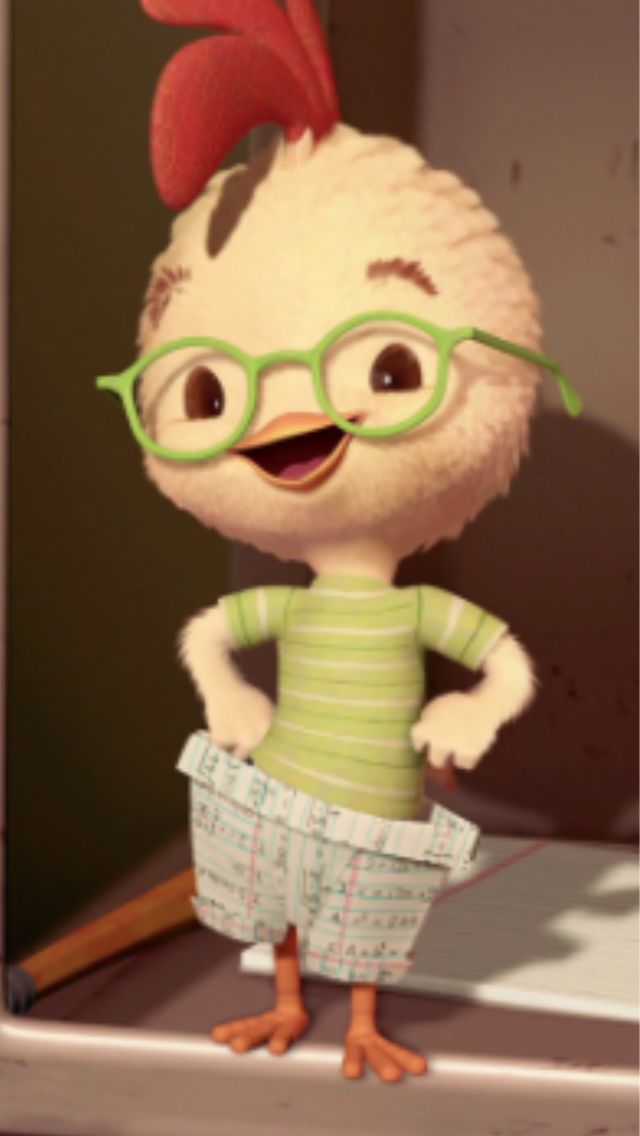 In nature, only two species rightfully bear this name - giant and crested argus. In addition, peacock pheasants are often also referred to as argus. Such liberty is fully justified, since these birds are more similar to real argus than to other pheasants. All these species are quite rare and little known to a wide range of nature lovers. The role of the main decoration of argus is assigned to unusual wings. If in all birds the primary flight feathers of the wing are the longest, and the secondary feathers are gradually shortened, then in the argus everything is exactly the opposite. The outermost feathers at the ends of its wings are short, but the secondary ones are so large that, when folded, they go beyond the body and give the impression of a huge tail. In addition to amazing feathers, argus attract attention with no less impressive coloring. Male Palawan Peacock Pheasants have a black head and chest, white cheeks, and dark blue flanks with a metallic sheen. The feathers of the back and tails are brownish-gray with bold specks.
In nature, only two species rightfully bear this name - giant and crested argus. In addition, peacock pheasants are often also referred to as argus. Such liberty is fully justified, since these birds are more similar to real argus than to other pheasants. All these species are quite rare and little known to a wide range of nature lovers. The role of the main decoration of argus is assigned to unusual wings. If in all birds the primary flight feathers of the wing are the longest, and the secondary feathers are gradually shortened, then in the argus everything is exactly the opposite. The outermost feathers at the ends of its wings are short, but the secondary ones are so large that, when folded, they go beyond the body and give the impression of a huge tail. In addition to amazing feathers, argus attract attention with no less impressive coloring. Male Palawan Peacock Pheasants have a black head and chest, white cheeks, and dark blue flanks with a metallic sheen. The feathers of the back and tails are brownish-gray with bold specks. This most modest part of the body is enlivened by large oval spots of the same color as the sides. In other species, the plumage is gray with small white specks. But their eyes dot not only the tail, but also the wings. When these birds show their plumage, the spots form the correct pattern in the same way as the eyes of real peacocks. Because of such beautiful colors, the birds were named after the mythological hundred-eyed guardian Argus. Argus live in Burma, Laos, Vietnam and Malaysia. They inhabit dense tropical forests on the plains and in the lower belt of mountains; keep alone. Interestingly, long feather decorations do not in the least impede their movement in impenetrable thickets. These birds are omnivorous in nature. Their diet includes young bamboo shoots, fruits and leaves of plants, mushrooms, insects, snails, slugs, small frogs and lizards.
This most modest part of the body is enlivened by large oval spots of the same color as the sides. In other species, the plumage is gray with small white specks. But their eyes dot not only the tail, but also the wings. When these birds show their plumage, the spots form the correct pattern in the same way as the eyes of real peacocks. Because of such beautiful colors, the birds were named after the mythological hundred-eyed guardian Argus. Argus live in Burma, Laos, Vietnam and Malaysia. They inhabit dense tropical forests on the plains and in the lower belt of mountains; keep alone. Interestingly, long feather decorations do not in the least impede their movement in impenetrable thickets. These birds are omnivorous in nature. Their diet includes young bamboo shoots, fruits and leaves of plants, mushrooms, insects, snails, slugs, small frogs and lizards.
Craxes
Tree hens or craxes or gokkos got their name not by chance, the fact is that these birds, unlike other chickens, nest only on trees. The sizes of birds range from 20 to 40 centimeters. The body is dense, the legs are strong, the head is decorated with a crest of feathers. The colored skin on the sides of the head and around the eyes is devoid of feathers. Birds live only in tropical forests. The Cracidae family consists of 11 genera, which include 38 species. They inhabit an area from Texas to Argentina. Birds hide in the dense crowns of trees, they deftly run along the branches, and occasionally fly over. From the top of the trees, the birds glide by spreading their short, rounded wings and landing on the lower branches. Such a flight from top to bottom does not require much effort for gokko. But in order to fly up the tree chicken has to make a lot of effort, it is easier to run up the branches and get to the top of the tree. Craxes also nest on trees, in a clutch of 2-3 white eggs. The chicks are covered with dense fluff and already on the 3-4th day are able to follow their parents. They roam after them, briskly moving from branch to branch.
The sizes of birds range from 20 to 40 centimeters. The body is dense, the legs are strong, the head is decorated with a crest of feathers. The colored skin on the sides of the head and around the eyes is devoid of feathers. Birds live only in tropical forests. The Cracidae family consists of 11 genera, which include 38 species. They inhabit an area from Texas to Argentina. Birds hide in the dense crowns of trees, they deftly run along the branches, and occasionally fly over. From the top of the trees, the birds glide by spreading their short, rounded wings and landing on the lower branches. Such a flight from top to bottom does not require much effort for gokko. But in order to fly up the tree chicken has to make a lot of effort, it is easier to run up the branches and get to the top of the tree. Craxes also nest on trees, in a clutch of 2-3 white eggs. The chicks are covered with dense fluff and already on the 3-4th day are able to follow their parents. They roam after them, briskly moving from branch to branch. Adult birds feed the chicks for several days, and then lose interest in their offspring. First, the entire brood keeps together, then, together with other birds, unites into a flock of up to 20 individuals. During the breeding season, pairs are formed, after the appearance of the gokko chicks, they lead a flock life. Tree chickens feed on plant foods, fruits, fruits, seeds. But the chicks are fed with worms, insects, larvae, which is probably why they grow quickly. They find food in the soil, raking the forest floor with strong legs. In case of danger, they hide in the dense canopy of trees. Accommodations are also arranged on the branches.
Adult birds feed the chicks for several days, and then lose interest in their offspring. First, the entire brood keeps together, then, together with other birds, unites into a flock of up to 20 individuals. During the breeding season, pairs are formed, after the appearance of the gokko chicks, they lead a flock life. Tree chickens feed on plant foods, fruits, fruits, seeds. But the chicks are fed with worms, insects, larvae, which is probably why they grow quickly. They find food in the soil, raking the forest floor with strong legs. In case of danger, they hide in the dense canopy of trees. Accommodations are also arranged on the branches.
California quail
California quail are the most beautiful representatives of crested quails. In the wild, this breed is common in North America. Birds prefer tall bushes for their habitat. California quail has a length, on average, from 23 to 25 centimeters. Males and females have the same plumage color. However, in females, the coloration is slightly paler. The head and upper body are grey-brown. The crest on the head is black. The chest and neck of the bird are gray. On the side there are thin light stripes. There are 10-15 eggs in the clutch of these quails. The eggs are dark brown with black dots. Incubation lasts 22-23 days. The female incubates the eggs and the male guards her. In the event of the death of the female, the male begins to incubate the eggs himself, and then also brings up the quail. At the age of 4 weeks, quails become independent and begin to stray into small flocks. Californian quails are often kept in captivity, but in our country there are very few amateurs who breed this breed. They are kept in small flocks in cages. They are kept for decorative purposes only.
However, in females, the coloration is slightly paler. The head and upper body are grey-brown. The crest on the head is black. The chest and neck of the bird are gray. On the side there are thin light stripes. There are 10-15 eggs in the clutch of these quails. The eggs are dark brown with black dots. Incubation lasts 22-23 days. The female incubates the eggs and the male guards her. In the event of the death of the female, the male begins to incubate the eggs himself, and then also brings up the quail. At the age of 4 weeks, quails become independent and begin to stray into small flocks. Californian quails are often kept in captivity, but in our country there are very few amateurs who breed this breed. They are kept in small flocks in cages. They are kept for decorative purposes only.
References:
Abakumov V.P. Bird in the household. - M., 1977.
Akimushkin I.I. World of Animals: Birds. Fish, amphibians and reptiles. - M., 1989.
Gershun V.I. Conversations about pets.


